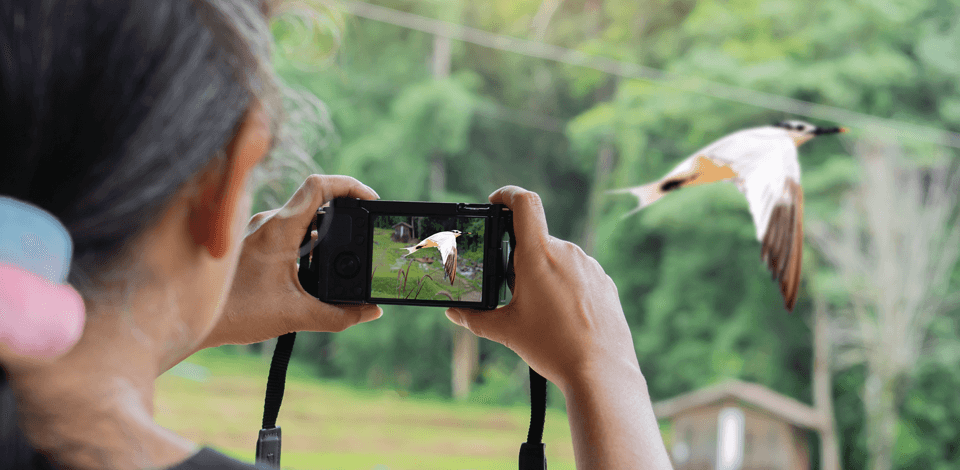
I have always enjoyed birdwatching as it’s a highly satisfying activity that allows me to discover the world’s marvels. I have reviewed a lot of pieces of equipment for the FixThePhoto blog, but it was still difficult for me to choose the most reliable birdwatching camera. Shooting birds is challenging, as they move fast. Capturing their feathers is daunting without the right gear.
Recently, I decided to find the best bird watching cameras - a lightweight model to carry during long hiking trips without getting tired. I wanted to discover a camera with powerful functionality to capture birds in flight without missing out on important details.
After reading through thousands of Amazon reviews, analyzing feedback on Reddit, asking FixThePhoto clients for recommendations, and considering specs, I compiled a list that included DSLR, mirrorless, and even smart bird watching camera feeders. Then, I tested 25+birding cameras in a real-world environment to see how they cope with different shooting scenarios.
Amazon: 200+ bought in the past month
B&H: 1K+ sold in the past year
Adorama: 600+ sold in the past year
Best Buy: 450+ sold in the past year
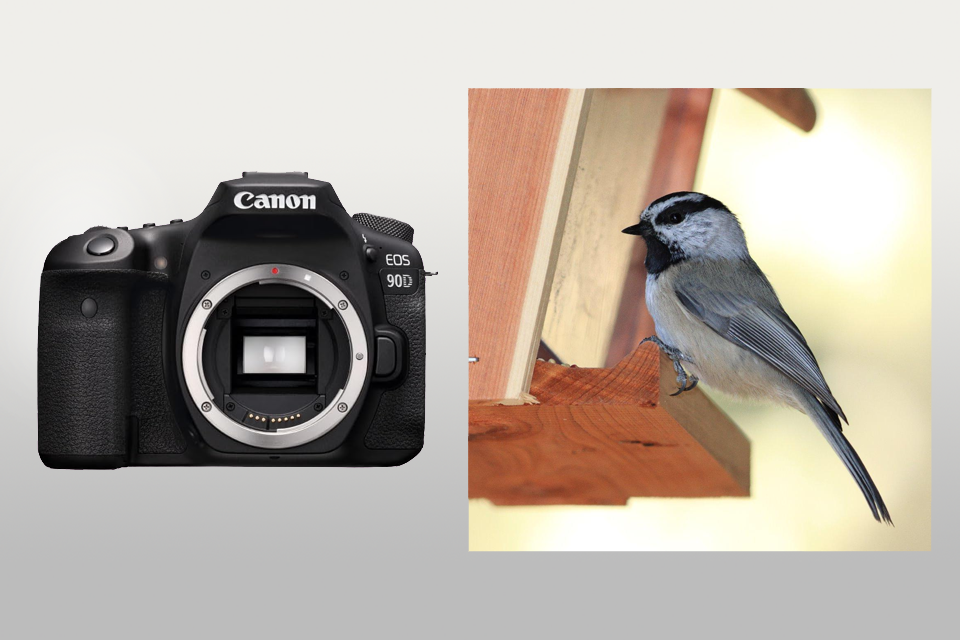
When I decided to use the Canon EOS 90D to see if it was suitable for birdwatching, I paired it with the Canon EF 100-400mm f/4.5-5.6L IS II USM lens. Known as one of the best cameras for bird photography, it stands out for its reach and sharpness. I went to Central Park early in the morning to test it out, as it’s a popular location among birdwatchers.
I quickly noticed a male Northern Cardinal perched on a low branch. The EOS 90D’s 32.5 MP sensor helped me take photos with bright colors. Every feather detail was perfectly visible, from the red plumage to the beak. This model is fitted with a Dual Pixel CMOS AF system, making its performance extremely fast. It instantly locks focus on the bird’s eye, even when it moves.
Later, I went to the lake where I noticed a great egret. I was able to capture it landing using the 10 fps continuous shooting mode. The camera’s AF tracking impressed me, as I was able to take excellent shots of moving birds. Unlike other birding cameras, this model has an ergonomic design. I did not experience any discomfort when using this model during my three-hour walk.
Nonetheless, I noticed some noise when using this camera at high ISO settings. When I was shooting in the North Woods, the sky was overcast. I had to increase the ISO to 3200 to achieve a higher shutter speed. I removed grain in the shadows during post-processing.
This model was recommended to me by another photographer who had been reading FixThePhoto for a long time. He stated that he liked that quick-access controls were easy to customize. I was able to switch between various focus modes and change exposure to take great photos in dynamic shooting environments.
This Canon camera supports excellent speed and resolution, making it invaluable for bird photographers. Even though it does not deliver the same top-notch performance as mirrorless cameras when I use it in low-light conditions, its durable build and impressive features make it a great option to consider.
Specs:
|
Type:
|
DSLR
|
|
Sensor: |
APS-C CMOS
|
|
Megapixels:
|
32.5 MP
|
|
Autofocus points:
|
45
|
|
Continuous shooting burst rate: |
10 fps
|
|
Image stabilization:
|
No
|
|
Buffer:
|
25 RAW frames
|
|
ISO sensitivity:
|
100-25,600 (expandable to 51,200)
|
|
Weight:
|
701 g
|
Amazon: 50+ bought in the past month
B&H: 550+ sold in the past year
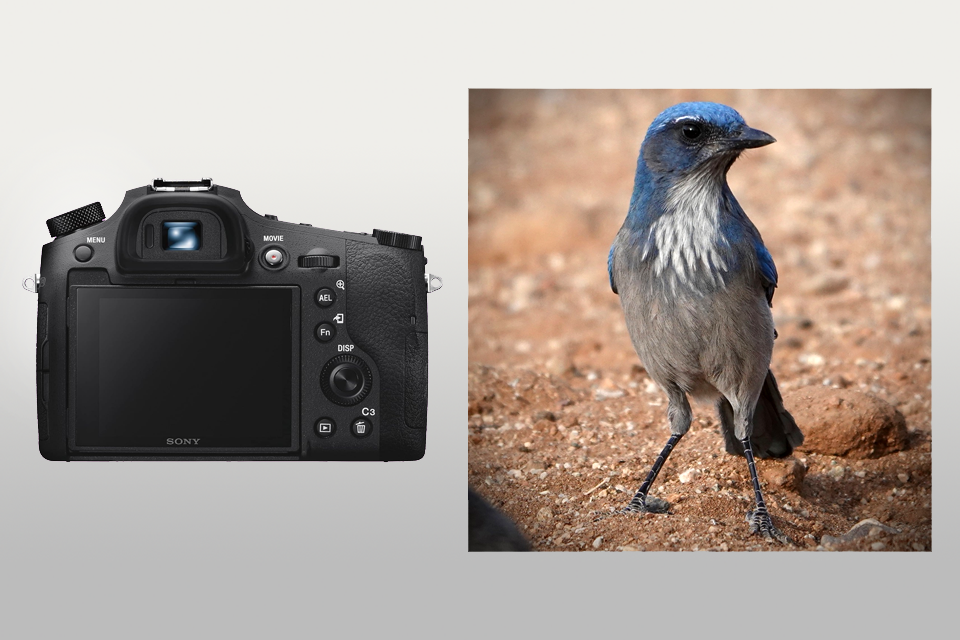
I wanted to take the Sony RX10 IV with me on a birdwatching trip, as it is known as the best camera for bird watchers. When paired with a 24-600mm f/2.4-4 Zeiss Vario-Sonnar T lens, it’s a great all-in-one solution.
I went to the Jamaica Bay Wildlife Refuge, as many birdwatchers visit this location. The RX10 IV has an excellent zoom range, making it perfect for capturing a group of ospreys from a distance. Even when I used it at 600mm, the images did not contain any blur. Due to the optical stabilization, I was able to use this compact camera in handheld mode.
On my way to the marsh, I met a family of mallards. The RX10 IV supports the 25 fps burst mode, allowing me to capture every moment perfectly. The AF system with 315 phase-detection points makes the shooting experience fast and quick.
While the EOS 90D has interchangeable lenses, the RX10 IV is more convenient to use as it comes with a fixed lens. It’s quite compact, making it suitable for everyday use. I was also happy with its silent shutter, as I was able to approach the birds without spooking them.
While the 1-inch sensor makes this bridge camera stand out, it does not allow me to capture the same level of detail as the Canon’s APS-C sensor. When cropping a photo of a perched egret shot against a bright sky, I noticed some blur in the highlights.
Specs:
|
Type:
|
Compact
|
|
Sensor:
|
1.0-type Exmor RS CMOS
|
|
Megapixels:
|
20.1 MP
|
|
Autofocus points:
|
315 phase-detection and 25 contrast-detection points
|
|
Continuous shooting burst rate:
|
24 fps
|
|
Image stabilization:
|
Optical SteadyShot (5-axis)
|
|
Buffer:
|
70 RAW frames
|
|
ISO sensitivity:
|
100-12,800 (expandable to 64-51,200)
|
|
Weight:
|
1095 g
|
Amazon: 50+ bought in the past month
B&H: 600+ sold in the past year
Adorama: 400+ sold in the past year
Best Buy: 200+ sold in the past year
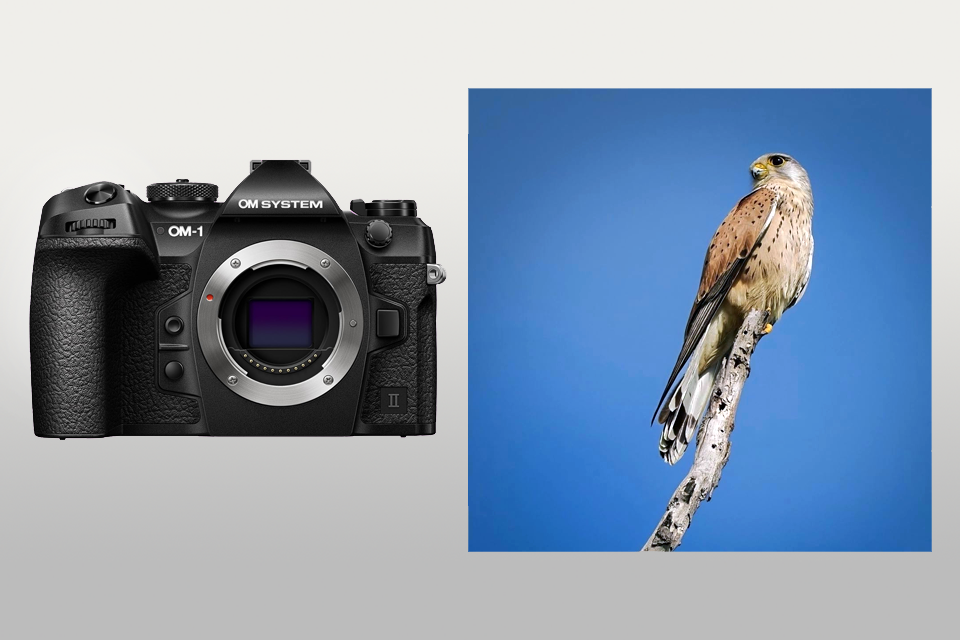
When looking for a suitable birdwatching camera, I discovered a Reddit thread where one professional recommended the OM SYSTEM OM-1 II. I was curious about its image stabilization and AI Subject Detection AF. I decided to test this model at Central Park’s Ramble, where one can see many warblers during migration season.
What impressed me about this camera is its small size and weather-sealed body. It makes it perfect for those who explore muddy trails after a morning rain. I used it with the M.Zuiko Digital ED 100-400mm f/5.0-6.3 IS to achieve an equivalent focal range of 200-800mm. It allowed me to capture small songbirds among tree branches.
I enjoyed its AI Subject Detection for tracking birds. It locked onto a black-and-white warbler immediately. The selling point is its Pro Capture Mode, which allows me to save frames before fully pressing the shutter. Using it, I was able to take a great shot of a red-tailed hawk mid-dive. Most cameras I have tested can’t help me take such a photo.
Even though its Micro Four Thirds sensor makes it extremely lightweight, it delivers subpar performance in poor light. After taking some photos early in the morning, I had to reduce noise during post-processing. The Canon EOS 90D delivers better outputs in similar conditions.
I agree with Reddit reviewers and believe that this Olympus camera stands out among the rest for its impressive speed, precision, and portability. Unlike some other birdwatching cameras, it has a silent shooting mode, due to which I was able to capture close-up photos of cardinals.
Specs:
|
Type:
|
Mirrorless
|
|
Sensor:
|
Micro Four Thirds Live MOS
|
|
Megapixels:
|
20 MP
|
|
Autofocus points:
|
121 cross-type points
|
|
Continuous shooting burst rate:
|
50 fps
|
|
Image stabilization:
|
In-body 5-axis image stabilization
|
|
Buffer:
|
35 RAW frames
|
|
ISO sensitivity:
|
100-25,600 (expandable to 64)
|
|
Weight:
|
585 g
|
Amazon: 40+ bought in the past month
B&H: 500+ sold in the past year
Adorama: 350+ sold in the past year
Best Buy: 150+ sold in the past year
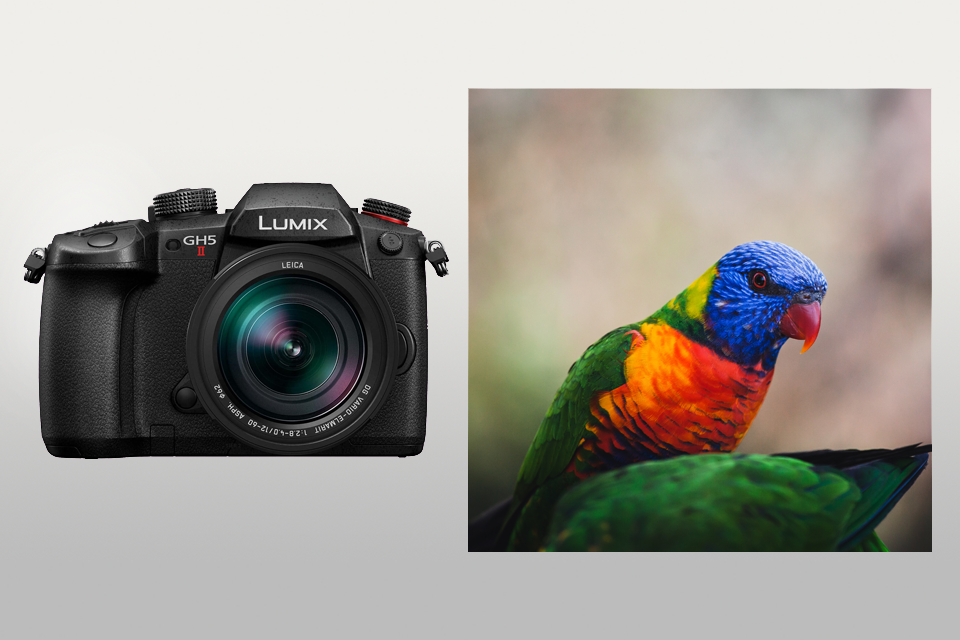
When I was talking to a photographer who specializes in duck hunting photography, he recommended the LUMIX GH5 II. This model is known for its pro-grade weather sealing and impressive video quality. It captures fast-moving birds even in poor light.
I decided to take the GH5 II to the Jamaica Bay Wildlife Refuge as well. I paired this camera with the Leica DG Vario-Elmar 100-400mm f/4-6.3 lens, which allowed me to capture ducks in the distance and birds that were closer to the shoreline.
One of the key advantages of this Panasonic camera is its 5-axis Dual I.S. system. When shooting on uneven terrain, I captured clear shots of mallards taking off in handheld mode. The 225-point AF system delivered excellent performance most of the time. However, occasionally, I would notice some lag when tracking fast.
The GH5 II supports outstanding video quality. I captured pro-grade 4K footage of northern pintails at 60fps and was pleased with the high level of detail. It captures rich natural colors in the bird’s feathers and water reflections.
However, when taking still shots, I was less pleased with the Micro Four Thirds sensor, as it has a limited dynamic range, making it hardly suitable for overcast conditions. While the output images weren’t blurry, they weren’t as beautiful as those from the EOS 90D. Still, it’s one of the best cameras for duck hunting suitable for taking videos and stills.
Specs:
|
Type:
|
Mirrorless
|
|
Sensor:
|
Micro Four Thirds Live MOS
|
|
Megapixels:
|
20.3 MP
|
|
Autofocus points:
|
225 points
|
|
Continuous shooting burst rate:
|
Up to 12 fps (mechanical) / up to 60 fps (shutter)
|
|
Image stabilization:
|
Dual I.S.
|
|
Buffer:
|
200 RAW frames
|
|
ISO sensitivity:
|
200–25,600 (expandable to 100)
|
|
Weight:
|
739 g
|
Amazon: 40+ bought in the past month
B&H: 500+ sold in the past year
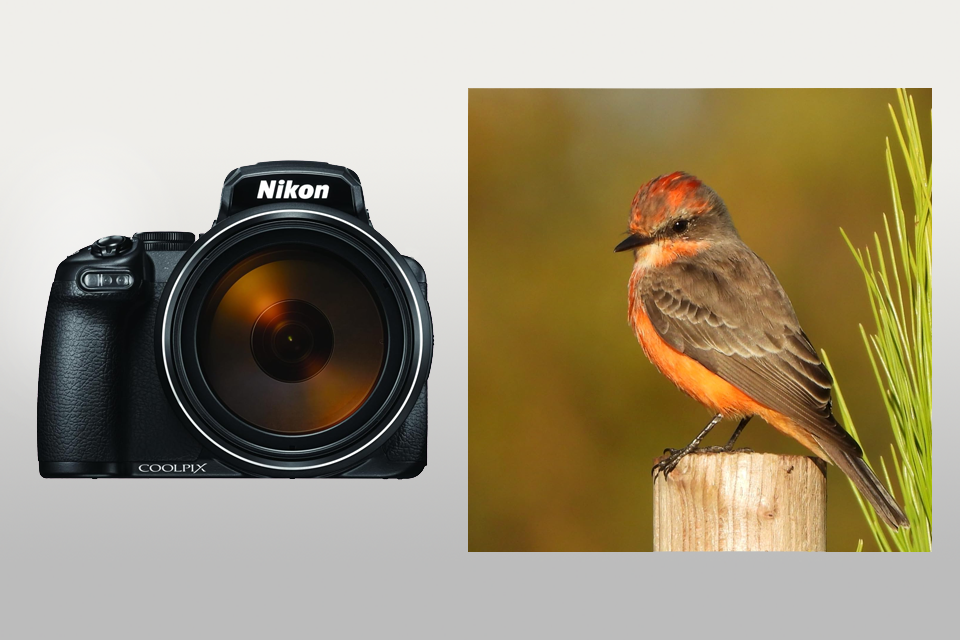
The COOLPIX P1000 is often mentioned on birdwatchers' forums. It’s considered the best bridge camera for birding. Photographers are pleased with its 125x optical zoom, which allows them to capture birds from afar without using interchangeable lenses.
To test its performance, I decided to visit Constitution Marsh Audubon Center and Sanctuary in Cold Spring, NY, to see herons, ospreys, and warblers. It’s the perfect place for testing the impressive zoom of this Nikon photography camera.
The zoom surpassed my expectations. I was able to capture an osprey perched atop a tree branch from afar. Every feather was clearly visible. The in-built stabilization allows me to avoid blur even at full zoom.
Nonetheless, while its AF is perfect for stationary subjects, it’s less efficient when it comes to capturing moving birds. The supported burst shooting rate is also quite low if you compare this model to the Cyber‑Shot RX10 IV.
What makes the P1000 different from the rest is its small size and all-in-one design. I can take it with me anywhere, knowing that I won’t get tired during long hikes. After testing this bird watching camera in wireless mode, I understood why so many people recommended it. While it has some shortcomings, its extreme reach and portable size make it a great option to consider.
Specs:
|
Type:
|
Point-and-shoot
|
|
Sensor:
|
BSI
|
|
Megapixels:
|
16
|
|
Autofocus points:
|
Contrast detect
|
|
Continuous shooting burst rate:
|
7 fps
|
|
Image stabilization:
|
Yes
|
|
Buffer:
|
7 RAW frames
|
|
ISO sensitivity:
|
100-6,500
|
|
Weight:
|
1415 g
|
Amazon: 200+ bought in the past month
B&H: 1K+ sold in the past year
Adorama: 700+ sold in the past year
Best Buy: 500+ sold in the past year
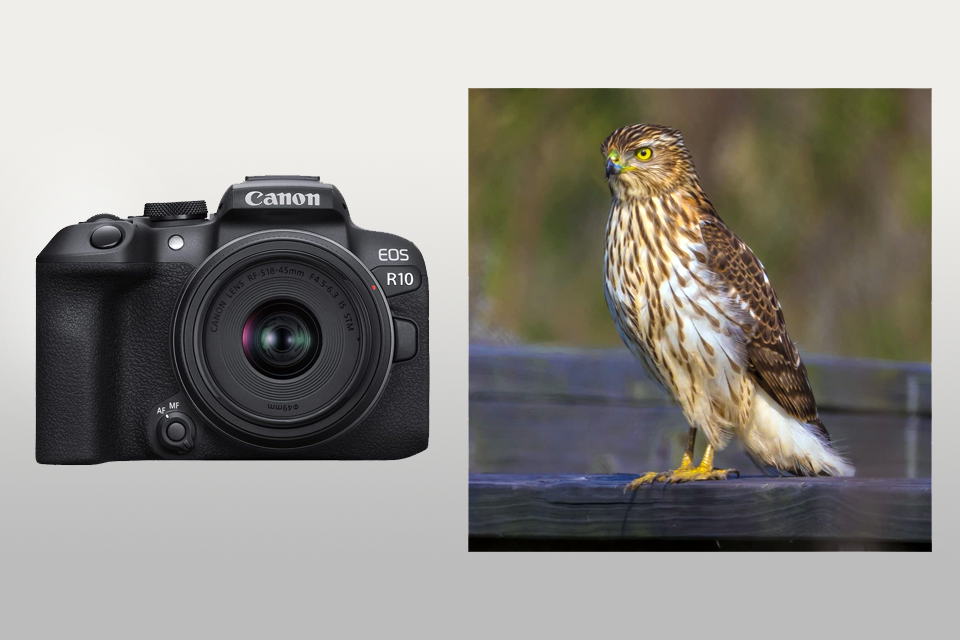
The Canon EOS R10 is advertised as a beginner birding camera, so I wanted to check whether it can still deliver pro-level output. I decided to test it in Jamaica Bay Wildlife Refuge in Queens with the Canon RF 100-400mm f/5.6-8 IS USM lens.
The R10 has a 15 fps mechanical shutter, which helped me capture a snowy egret mid-takeoff without any blur. The Dual Pixel CMOS AF II system allows me to track birds in flight with impressive precision. It makes it stand out among other budget cameras for birding.
What I like most about the R10 is that it is extremely intuitive. It has well-thought-out menus and a lightweight body, making it easier to use during long walks.
Nonetheless, I was less happy with the crop sensor that has a limited field of view, making it quite different from full-frame cameras. It might be challenging to avoid noise in poor light, like when you shoot birds in the tree shadow.
When using this beginner birding camera, I met a birder, who told me he liked this model, as it supports 4K 30p video quality. After testing it, I was pleased by the sharpness of the output footage. It’s a great choice for those who want to shoot social media content or work on beginner-level video projects.
Specs:
|
Type:
|
Mirrorless
|
|
Sensor:
|
APS-C
|
|
Megapixels:
|
24.2
|
|
Autofocus points:
|
651
|
|
Continuous shooting burst rate:
|
23 fps (JPEG); 21 fps (RAW)
|
|
Image stabilization:
|
Digital only
|
|
Buffer:
|
~29 RAW frames
|
|
ISO sensitivity:
|
100-32,000 (Extended 100-51,200)
|
|
Weight:
|
429 g
|
Amazon: 400+ bought in the past month
B&H: 5K+ sold in the past year
Adorama: 3K+ sold in the past year
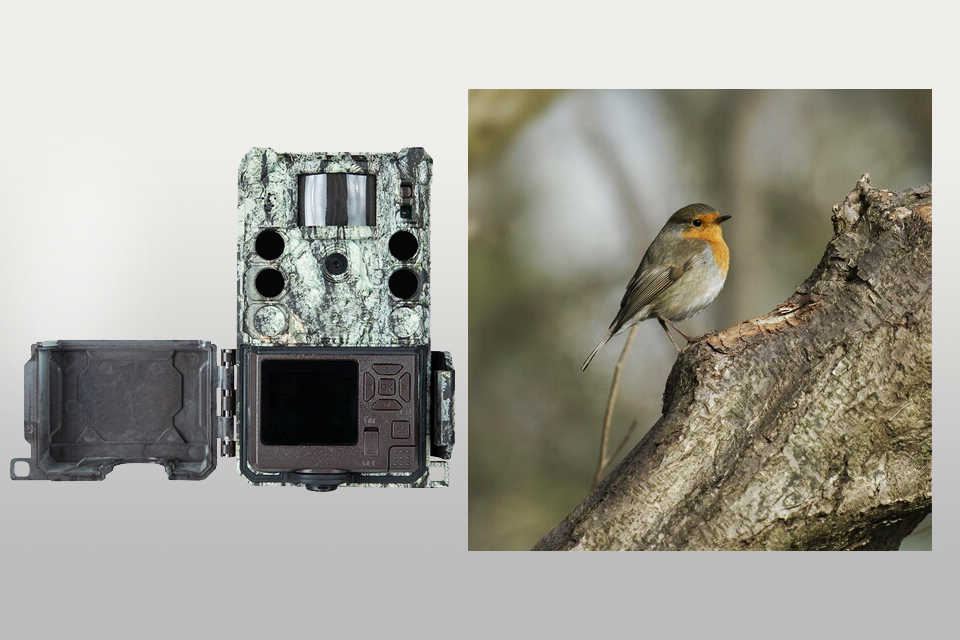
The Bushnell CORE S-4K is often hailed as the best trail camera for bird watching, as it is completely waterproof and allows users to capture 4K footage. It did not take me long to set up the Bushnell CORE S-4K, as it’s quite intuitive. Its UI is streamlined, which allows me to quickly adjust resolution, sensitivity, and trigger speed.
I decided to mount the camera on a tree in the quiet part of the Inwood Hill Park near my home. I used birdseed to attract some birds. In a few hours, the camera captured a lot of species, from sparrows on the ground to a blue jay.
I was extremely pleased with the quality of 4K footage. When watching a video of red-tailed hawk hunting its prey, I felt as if I was watching a documentary about the birds. Due to the high trigger speed of this outdoor bird camera, I was able to capture even small birds that moved too fast.
Nevertheless, it took me a while to choose the right place to achieve optimal lighting conditions. In some locations, shaded areas were underexposed. It was a bit challenging to stay patient, as my experience of using a DSLR camera is different.
Still, I was happy when I captured a photo of a northern flicker woodpecker, as I had never met this species in this park before. I felt that all my efforts did not go in vain.
Specs:
|
Stills resolution:
|
32MP
|
|
Video resolution:
|
4k at 30fps
|
|
Video length:
|
up to 60 seconds
|
|
Data storage:
|
Via SD or SDHC card, up to 32GB
|
|
Night vision:
|
Yes (up to 110ft)
|
|
Audio recording:
|
Yes (with video)
|
|
LCD:
|
Yes
|
|
Power:
|
6x AA batteries
|
Amazon: 3K+ bought in the past month
NETVUE: 28K+ sold in the past year
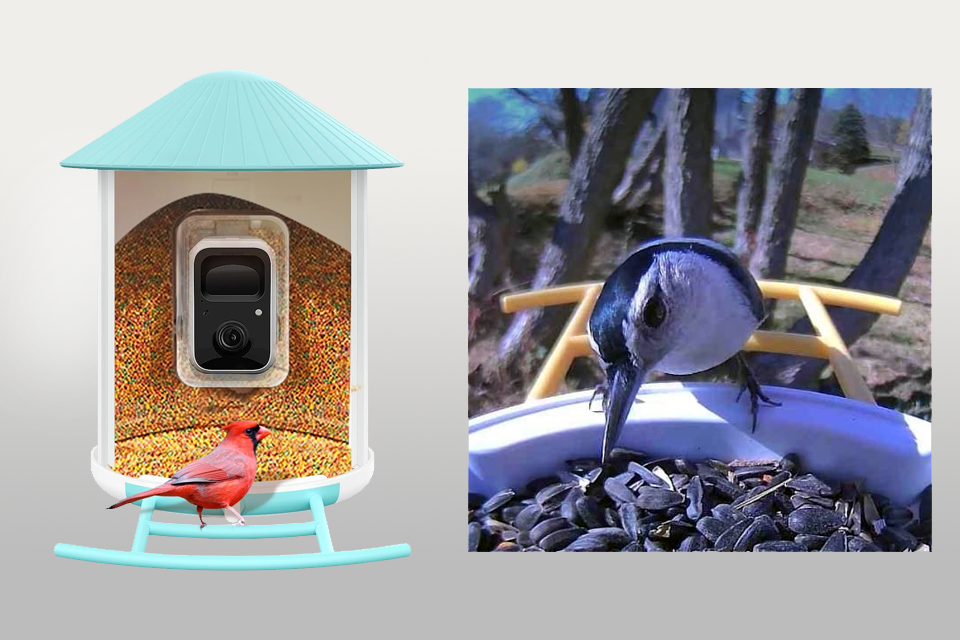
I decided to test out the NETVUE Birdfy AI due to positive Amazon reviews. Many people were thrilled that it identifies bird species with high accuracy. It got me curious, as this model wasn’t just a feeder equipped with a camera. It looked like a great tool for birders like me who wanted to enjoy birdwatching.
After installing this camera for birds in my backyard in Inwood, I started to wait. Unlike a trail camera, the Birdfy AI supports a more interactive birdwatching experience. It has a native app, which allows me to watch live streams and identify species.
Whenever a bird approached the camera, I received an alert with complete information about the species. I was extremely pleased when this outdoor camera for bird watching helped me identify an eastern bluebird, as I had never seen this species before.
The camera has decent build quality. It supports sharp 1080p video. However, Bushnell’s 4K models and mirrorless cameras for video recording can easily beat it in terms of quality.
The app allows me to review videos and share information about the birds I have seen. The only shortcoming is that its motion detection feature is a bit slow, which makes it a less appealing option than Bushnell’s bird watching cameras. Besides, even though its AI identification is quite decent, it occasionally makes mistakes. Once, it identified a juvenile cardinal as a tanager.
Specs:
|
Video resolution:
|
1920 x 1080 FullHD
|
|
Storage:
|
Micro SD, Online
|
|
Bird identification AI:
|
Yes
|
|
Security features:
|
2 Way Audio, Alarm
|
|
Power:
|
6x AA batteries
|
|
App:
|
Netvue (Android, iOS)
|
Amazon: 5K+ bought in the past month
Best Buy: 35K+ sold in the past year
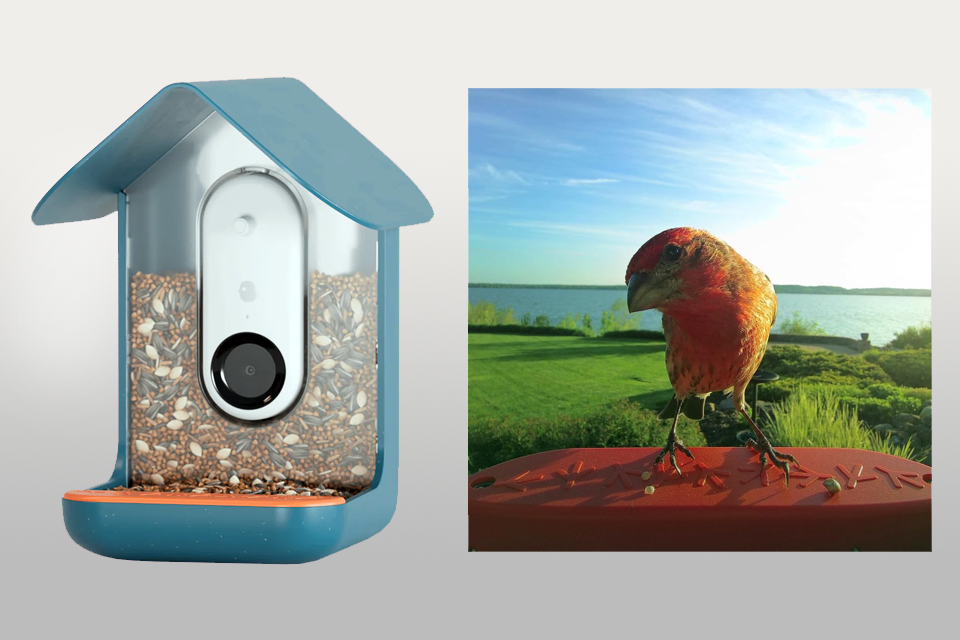
The Bird Buddy is sought by many birdwatchers as it has a well-thought-out design and AI features. I decided to test it hoping that it would make it easier for me to capture finches, robins, and jays and learn more about their behaviors.
If you compare it to Birdfy, you will see that the Bird Buddy is a more high-end model. It has a dedicated app that has similar functionality to Birdfly but is easier to navigate. The selling point of this camera for birding is its gamified species identification system. It sent me notifications when birds approached and granted rewards for spotting new species.
Similar to Birdfy, the Bird Buddy allows me to capture 1080p video with a decent level of detail. However, it can easily beat it when it comes to framing and motion detection. In most cases, birds were centered in the frame, which made it easier for me to snap great pics.
The AI recognition demonstrates high precision. It was able to identify a mourning dove and a downy woodpecker immediately, while Birdfy had difficulties with these species. Despite these advantages, its battery life is inferior to the NETVUE that supports solar power.
All in all, I believe that the Bird Buddy is an excellent choice for every person interested in bird photography. It delivers high-accuracy results and stands out for its interactive experience.
Specs:
|
Video resolution:
|
1280x720 (5MP Photo)
|
|
Storage:
|
Online
|
|
Bird identification AI:
|
Yes
|
|
Security features:
|
No
|
|
Power:
|
Battery, Optional Solar panel roof charger
|
|
App:
|
Bird Buddy (Android, iOS)
|
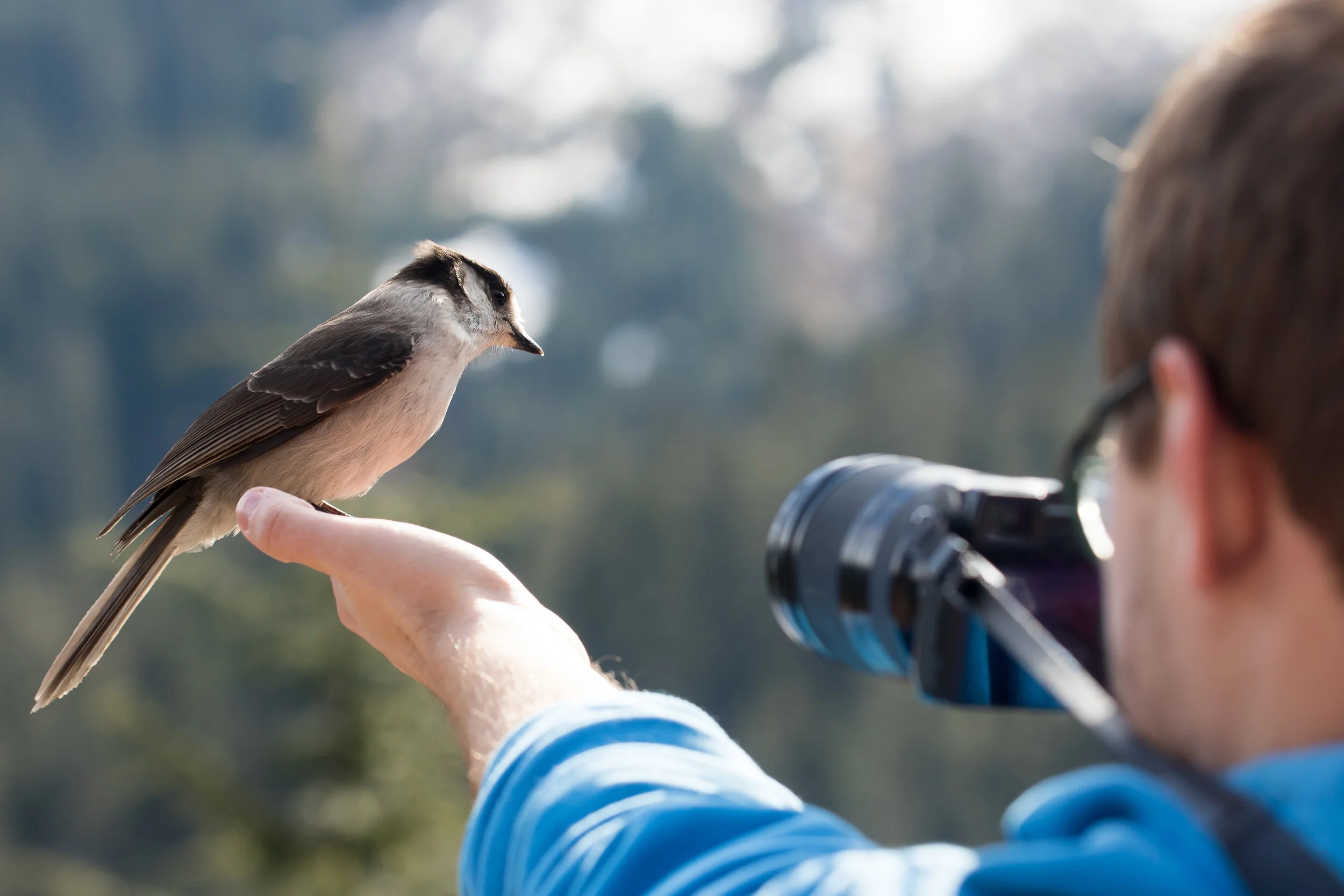
Autofocus. Birdwatchers know that shooting photos is easier if a camera is fitted with an intelligent AF system. Buy a model with features like animal eye or bird detection AF.
FPS. Fast continuous shooting makes it easier to capture unpredictable bird movements. Buy a model that supports at least 15-20 fps for excellent results.
Image sensor. If you want to print or sell your photos, cameras fitted with full-frame sensors with 24MP or more stand out for their quality.
Zoom range. As you will need to capture birds from afar, a powerful zoom is essential.
Low-light performance. Birds are often active at dawn and dusk. Buy a camera with decent performance and minimal noise at high ISO settings.
Versatility. If you are mostly interested in photography, buy a camera with decent fps, megapixels, and autofocus. If you want to shoot videos, choose models with 4K 60p or 120p support to capture pro-grade footage in slow-motion mode.
Portability. If you enjoy hiking, pick a camera that is easy to carry around.
Budget. Experienced photographers use cameras with interchangeable lenses, as they are suitable for different shooting scenarios.
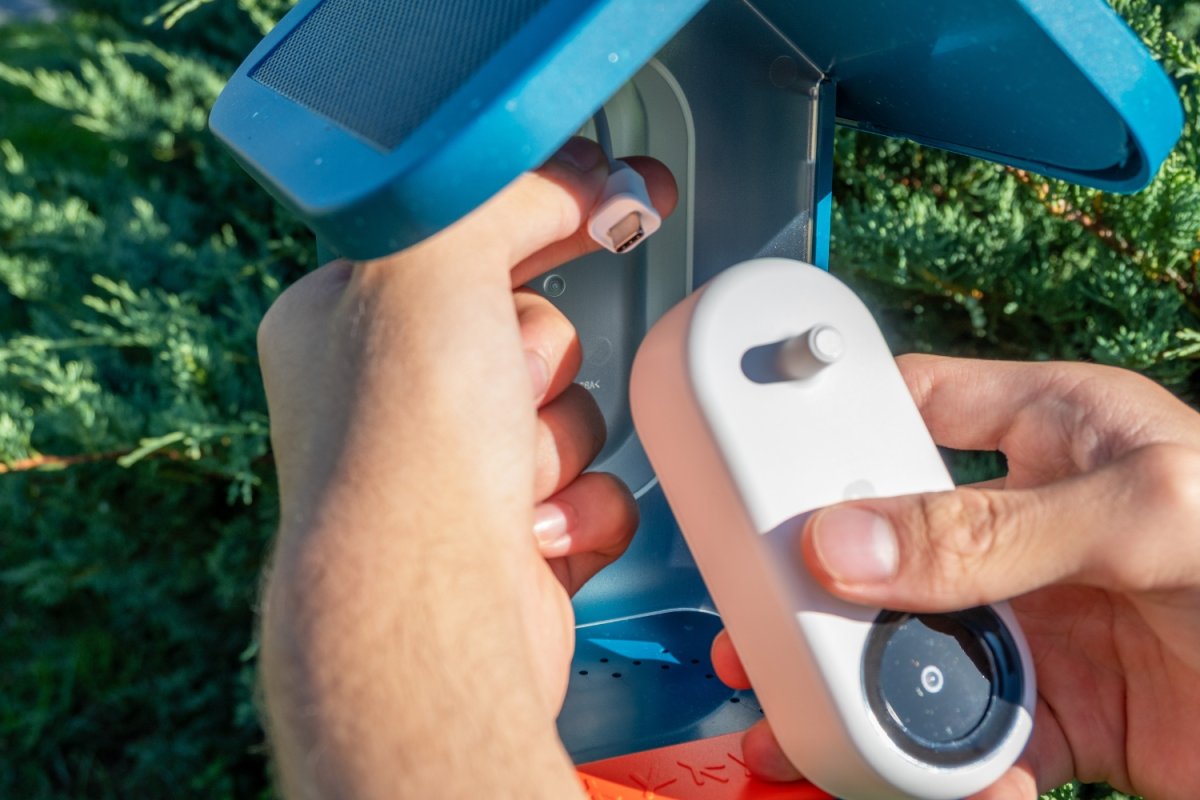
If you are looking for reliable bird-watching camera feeders, consider the following options:
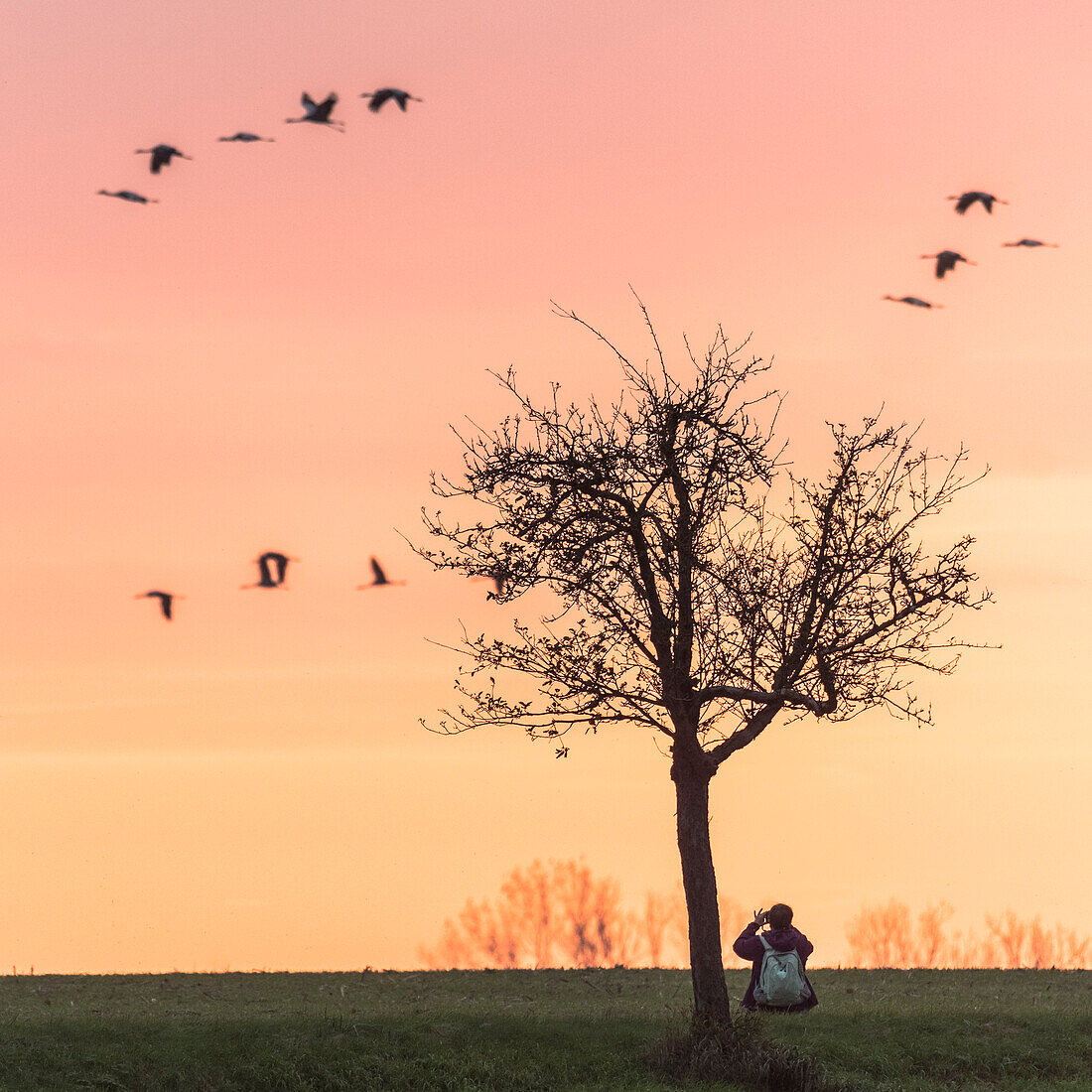
As I wanted to conduct my tests in real-life conditions, I decided to visit some of the most famous birdwatching locations in NY, including Central Park, Jamaica Bay Wildlife Refuge, Constitution Marsh Audubon Center, and Sanctuary in Cold Spring.
To achieve objective results, I decided to use not only my go-to cameras but also rent some popular models at FotoCare. I have created a list of the most widely used cameras for birding photography with the help of my FixThePhoto colleagues, Tati, Robin, and Tata. I also read Reddit and analyzed buyer feedback on Amazon, B&H Photo, and Adorama.
First, I considered AF performance. I wanted to capture perched and flying birds to see how well each model tracked moving subjects, captured important details, and dealt with foliage and other issues.
Next, when reading bird camera reviews, I focused on continuous shooting capabilities, as I wanted to capture birds in flight. I experimented with burst modes to capture dynamic takeoffs and mid-air maneuvers. It helped me see each model’s frame rate and check sharpness.
I also tested the cameras in poor light conditions. Birds fly a lot during dawn and dusk, so I used high ISO settings to see whether the cameras were able to deliver consistent image quality without adding noise in dim environments.
Portability and ergonomics were also crucial. I explored lengthy trails to see whether these cameras were portable, lightweight, and easy to handle. I wanted to find models that allowed me to configure their settings on the go. As a result, I discovered the cameras with intuitive interfaces. They allow me to quickly adjust the aperture, shutter speed, and focus mode.
To check whether bird-watching camera feeders have great value for the money, I tested 5 top-rated models over 2 weeks in my backyard. There are a lot of native plants and open spaces in my garden, so I can often capture some local bird species there. After finding the perfect spot for every feeder, I was able to check field of view, motion detection, and image quality in different lighting.
When testing these cameras, I focused on ease of setup, output clarity, and motion sensor responsiveness. We also considered battery life and Wi-Fi. I tested the feeders during the rain to check whether they were actually weather-resistant and made of durable materials. The results helped us discover the best feeders for capturing birds with little to no effort.
After thorough testing, we were able to see which cameras were worth every dime and recommend them for bird photographers. Whether you enjoy birdwatching as a hobby or want to shoot professional content, this guide will help you make a fact-based decision.
27/12/24: I have updated my list with detailed reviews of some excellent models like the Canon EOS R10, Nikon Coolpix P1000, and Panasonic Lumix GH5 II. All of them stand out for their impressive AF capabilities and superb high fps rates, making them perfect for shooting birds and other moving subjects.
I decided to remove some outdated models like the Canon EOS R7, Nikon Z9, Sony a7 IV, Fujifilm camera X-T4, and Panasonic Lumix G9. Even though they still could be a great choice, they are hardly suitable for modern bird photographers who are after advanced features, high autofocus speed, and AI subject detection. Besides, some new models with pro-level features are more cost-effective.
15/11/24: As birdwatching becomes more popular, I decided to add a new section on trail and birdwatching camera feeders. Using such accessories, you can watch birds in your backyard and take great photos of them. They will become a nice tool for every fan of bird photography.
I have also decided to make some changes in the buyer’s guide to keep up with recent technological advancements. I have added information about the essential role of 4K video support at 60fps, consistent performance at high ISO settings, zoom capabilities, and portability.